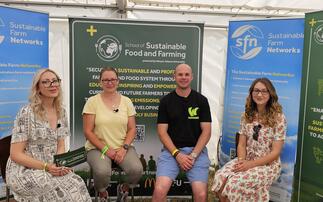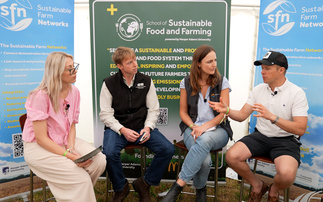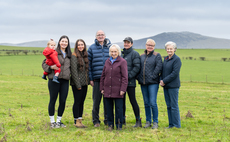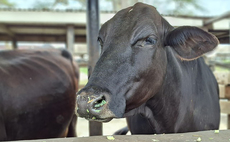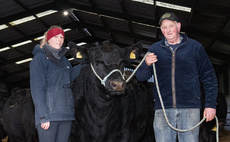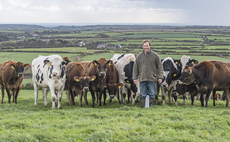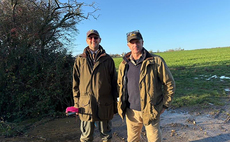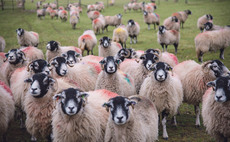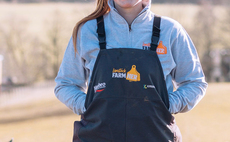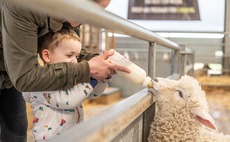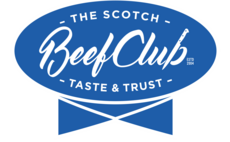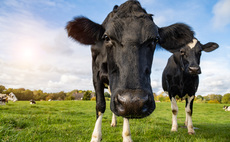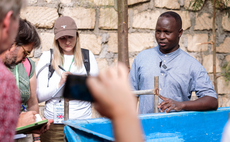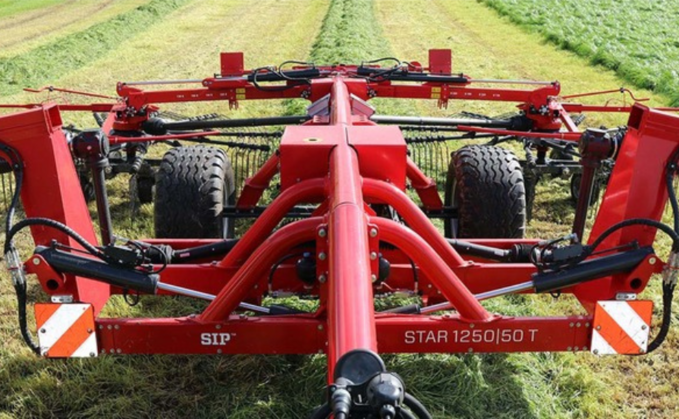
Volac’s silage experts around the UK agree that if you were fortunate enough to escape last season relatively unscathed, there were still key lessons.
If someone had told you at the start of 2022 that by summer you would be staring at a grass silage shortfall due to drought, would you have approached earlier silage cuts any differently?
Not all parts of the country experienced drought, but even if you were fortunate enough to escape relatively unscathed, there were still key lessons, Volac's silage experts around the UK agree.
Peter Smith, who operates throughout Wales and parts of the English Midlands, says: "The major grass silage lesson that 2022 underlined for me was that a multi-cut approach can bring big advantages.
"The term multi-cut can put some farmers off, but it does not necessarily mean cutting six times a season. It might simply mean taking four cuts rather than three.
"The important point is to take that first cut earlier. For example, in April rather than late May, when there is an increased risk of grass going to head.
"For a number of years we have seen that farmers with the best silage have tended to cut earlier and more often.
"Last season underlined this because the drought triggered a stress response in grass which caused it to head prematurely, so there was little extra growth after that point and quality was lost. Producers who cut earlier avoided this."
Fresh regrowth
By taking first-cut earlier, Peter says it clears out over-wintered grass to encourage fresh regrowth for a better second cut, plus it means some silage is safely ‘banked'.
He says: "A survey we conducted among more than 700 UK dairy farmers at the end of last year showed almost half (45%) of those making multi-cut had already taken two cuts by the end of May, compared with only 17% in the conventional group.
"And nearly twice as many multi-cut makers as conventional silage-makers felt their silage quality was actually better than normal in 2022 - at 20% versus 12%."
Overall, Peter says grass silage yields were 5-10% down in his area, but harder hit were the southern counties of England, where Volac silage expert Ken Stroud says they were 10-15% down.
Ken agrees that 2022 underlined the benefit of a multi-cut approach. Ken says: "Although the summer drought hit grass growth particularly hard in southern England, in spring we actually had good growing conditions, so initially there was plenty of grass.
"While some farms used this as an opportunity for an early first-cut, those who waited until later started to run into problems with crops producing excess bulk.
"This had two consequences. Firstly, bulky crops took longer to wilt and we know that longer wilting leads to higher in-field losses in sugars and proteins.
"Secondly, they contained a lot of dead grass in the sward base and dead grass is prone to yeast and mould growth, leading to problems with silage heating.
"Those who took the opportunity for an early first-cut produced some superb second cuts of up to 12.25MJ/kg dry matter [DM] of metabolisable energy [ME], while poorer crops were down at about 10.3 ME."
Silage stocks
Another negative legacy of seasons like 2022 when silage yields are down, says Ken, is if spring grass growth for turnout the following year is slow, because there will be limited silage stocks for buffer feeding.
He says: "Sometimes, it can be difficult for farmers to grasp the benefit of multi-cut because they focus on the cost of additional cuts. But it is important to see the bigger picture.
"From our own trial work, cutting grass five times actually yielded more DM over the season and produced grass on average three D units higher in digestibility and almost 3% higher in crude protein.
"Extra cuts may cost a bit more, but having extra silage in stock can be a life saver, and producing better quality silage is the foundation for more milk from forage. If you look after it, well-conserved silage can last in the clamp for years."
Northern England
In northern England, Jason Short reports a more mixed 2022 silage season, with some locations experiencing a favourable summer with good grass growth while others were hit by drought.
Overall, Jason says northern England grass silage yields were down 5-10%.
He says forage maize did not come to the rescue because maize yields were as much as 20-40% down.
Jason says: "Years like 2022, when grass quality and quantity are down, underline the importance of not letting any more slip away in the clamp or bale.
"This comes down to good harvest practice and good clamp management, but also down to correct additive choice so fermentation is not simply left to chance.
"Research on the additive Ecosyl has shown it to halve DM losses, which means more DM is available to feed.
"In other work, Ecosyl treatment has also been shown to boost average ME by 0.6 MJ/kg DM, to improve digestibility by three D units and to preserve more true protein.
"In independent dairy trials, feeding a range of silages preserved with Ecosyl also boosted milk yield by an average of 1.2 litres per cow per day. Sometimes farmers think protecting silage with an additive is expensive.
"But what is actually expensive is losing DM or quality after you have gone to the expense of making silage, then having that poorer silage impact on milk from forage."
Scottish silage
Volac business manager in Scotland, Alan Smith, says there was no drought in Scotland in 2022.
Indeed, it was one of the best years he can remember for grass growth, with second and third cuts producing good yields and quality.
But there were issues with some first cuts - which, once again, those cutting early managed to avoid.
Alan says: "Some farmers took first cuts early, but then we had one to two weeks of poor weather and, by the time others got to first cuts, grass crops were heavier and of poorer quality, which was not ideal for dairy diets.
"Other than that, just because we had generally kind weather for making silage in Scotland in 2022, we cannot assume the same will happen this year.
"To preserve silage with a quality fermentation, use a joined-up approach combining good in-field and harvest management, good ensiling practices and a proven additive.
"By investing in producing good silage, it puts farms in a stronger position. Not only is home-produced silage a financially attractive feed, it is also highly sustainable."
For more information on Volac's Cut to Clamp initiative, visit cuttoclamp.com.
As well as its Cut to Clamp initiative, Volac is proud to be one of the sponsors of Dairy Farmer's Campaign for Better Silage. For more information, visit Better Silage Hub.










